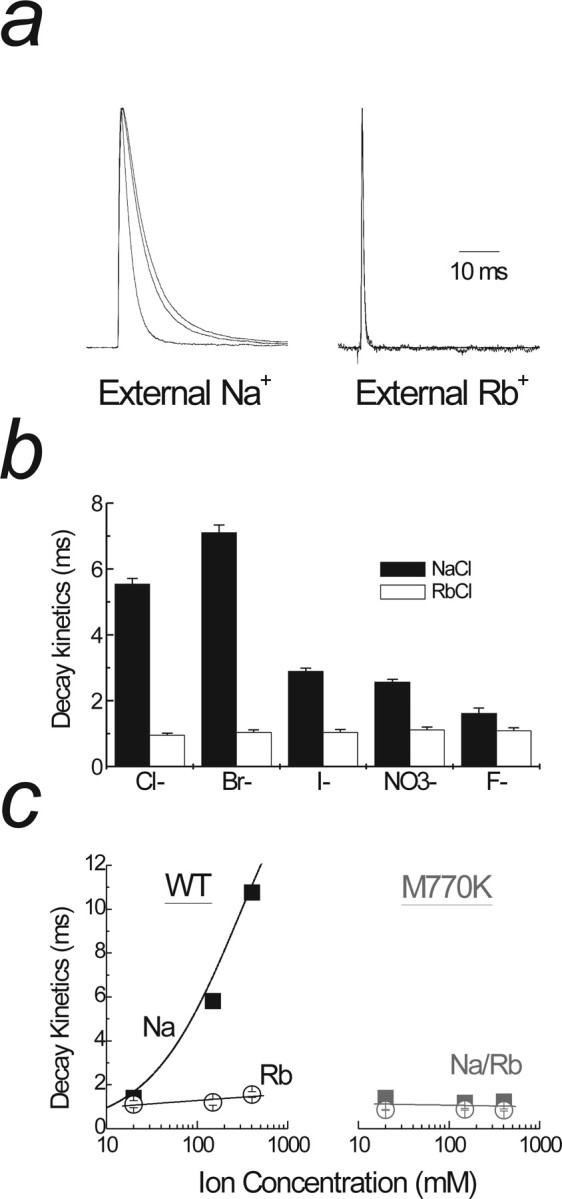Figure 7.

Basic amino acids at the M770 position act as surrogate cations. a, Left, Raw data traces showing anion substitutions in which Na+ is the major cation (patch 04130p2). There is an acceleration of decay kinetics when Br− is replaced with Cl− and NO3−. Right trace shows the same experiment as left but with Rb+ as the major cation (patch 06209p1). Note that anion substitutions do not change decay kinetics in the presence of Rb+. b, An extended series of anion substitutions with either Na+ (black bars) or Rb+ (white bars) as the dominant cation. There is no change in decay kinetics when anions are substituted in Rb+ in contrast to Na+. Data are mean ± SEM for at least six patches in each anion with Na+ or Rb+ as the major cation. c, The effect of changing the external Na+ (filled squares) and Rb+ (open circles) concentrations on the decay kinetics of wild-type GluR6 (left) and GluR6M770K (right) receptors. Note that the decay kinetics GluR6wt matches that of GluR6M770K only when Rb+ ions are used.
